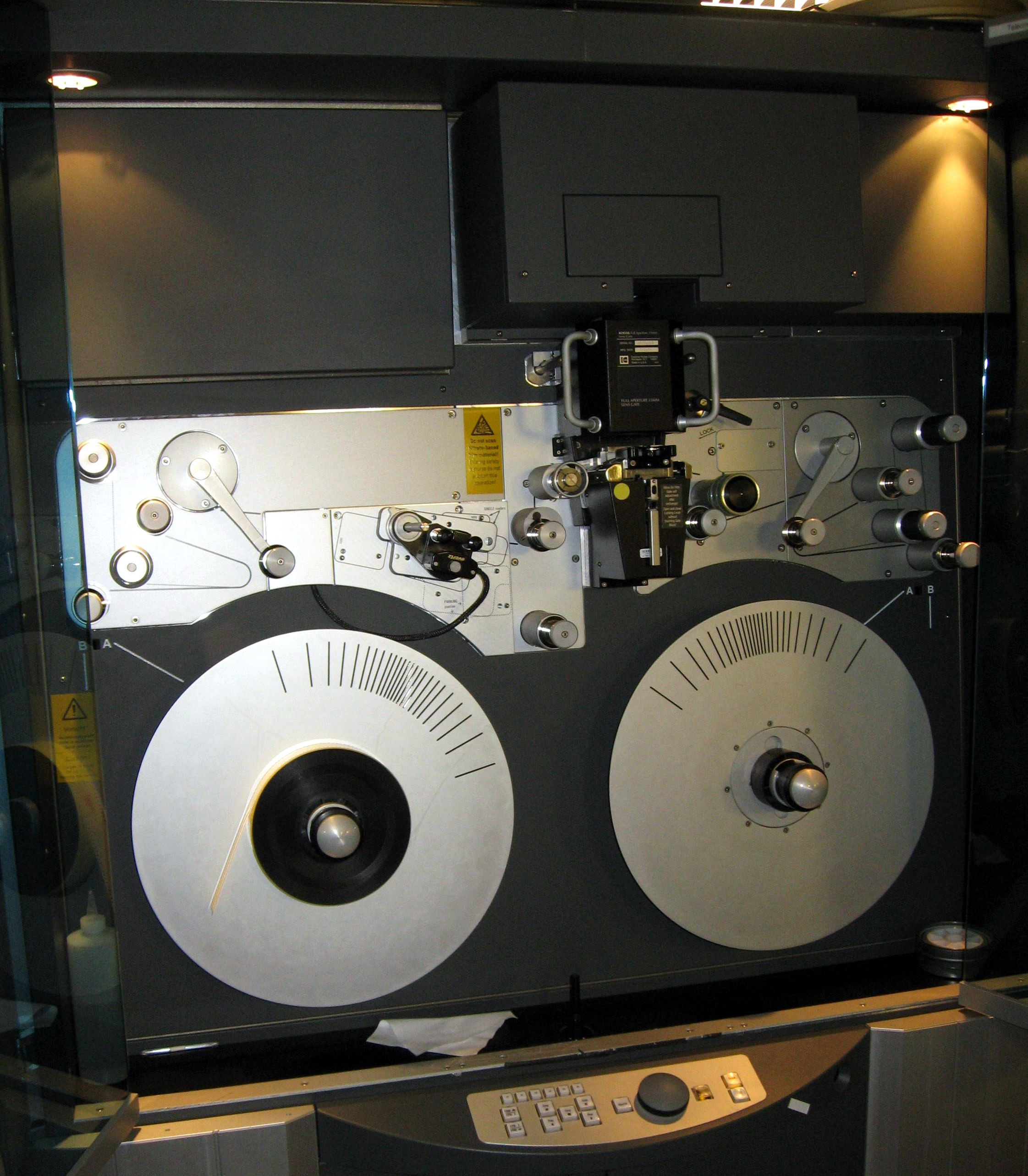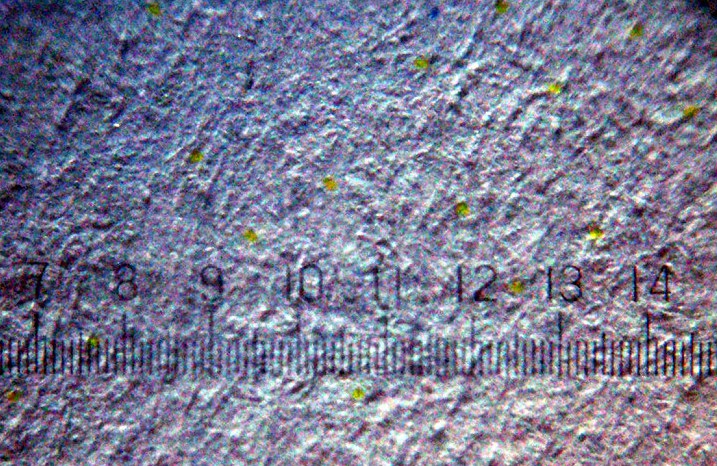|
Coded Anti-Piracy
Coded anti-piracy (CAP) is an anti-copyright infringement technology which marks each film print of a motion picture with a distinguishing pattern of dots, used as a forensic identifier to identify the source of illegal copies. They are not to be confused with cue marks, which are black or white circles usually in the upper right-hand corner of the frame. A cue mark is used to signal the projectionist that a particular reel of a film is ending, as most films come to theaters on several reels of celluloid. CAP code CAP coding is a multi-dot pattern that is printed in several frames of a film print of a theatrically exhibited motion picture. It is sometimes accompanied by text code printed on the edge of a motion picture print, outside the visible picture area. The dots are arranged in a unique pattern as identification of the particular print of a movie, and are added during manufacture. The marks are not present on the original film negative; they are produced either by physic ... [...More Info...] [...Related Items...] OR: [Wikipedia] [Google] [Baidu] |
Copyright Infringement
Copyright infringement (at times referred to as piracy) is the use of works protected by copyright without permission for a usage where such permission is required, thereby infringing certain exclusive rights granted to the copyright holder, such as the right to reproduce, distribute, display or perform the protected work, or to make derivative works. The copyright holder is typically the work's creator, or a publisher or other business to whom copyright has been assigned. Copyright holders routinely invoke legal and technological measures to prevent and penalize copyright infringement. Copyright infringement disputes are usually resolved through direct negotiation, a notice and take down process, or litigation in civil court. Egregious or large-scale commercial infringement, especially when it involves counterfeiting, is sometimes prosecuted via the criminal justice system. Shifting public expectations, advances in digital technology and the increasing reach of the Internet ... [...More Info...] [...Related Items...] OR: [Wikipedia] [Google] [Baidu] |
Telecine
Telecine ( or ) is the process of transferring film into video and is performed in a color suite. The term is also used to refer to the equipment used in the post-production process. Telecine enables a motion picture, captured originally on film stock, to be viewed with standard video equipment, such as television sets, video cassette recorders (VCR), DVD, Blu-ray Disc or computers. Initially, this allowed television broadcasters to produce programs using film, usually 16mm stock, but transmit them in the same format, and quality, as other forms of television production. Furthermore, telecine allows film producers, television producers and film distributors working in the film industry to release their productions on video and allows producers to use video production equipment to complete their filmmaking projects. Within the film industry, it is also referred to as a TK, because TC is already used to designate timecode. Motion picture film scanners are similar to telecines. ... [...More Info...] [...Related Items...] OR: [Wikipedia] [Google] [Baidu] |
Film And Video Technology
A film also called a movie, motion picture, moving picture, picture, photoplay or (slang) flick is a work of visual art that simulates experiences and otherwise communicates ideas, stories, perceptions, feelings, beauty, or atmosphere through the use of moving images. These images are generally accompanied by sound and, more rarely, other sensory stimulations. The word "cinema", short for cinematography, is often used to refer to filmmaking and the film industry, and to the art form that is the result of it. Recording and transmission of film The moving images of a film are created by photographing actual scenes with a motion-picture camera, by photographing drawings or miniature models using traditional animation techniques, by means of CGI and computer animation, or by a combination of some or all of these techniques, and other visual effects. Before the introduction of digital production, series of still images were recorded on a strip of chemically sensitize ... [...More Info...] [...Related Items...] OR: [Wikipedia] [Google] [Baidu] |
Printer Steganography
A Machine Identification Code (MIC), also known as printer steganography, yellow dots, tracking dots or secret dots, is a digital watermark which certain color laser printers and copiers leave on every printed page, allowing identification of the device which was used to print a document and giving clues to the originator. Developed by Xerox and Canon in the mid-1980s, its existence became public only in 2004. In 2018, scientists developed privacy software to anonymize prints in order to support whistleblowers publishing their work. History In the mid-1980s Xerox pioneered an encoding mechanism for a unique number represented by tiny dots spread over the entire print area. Xerox developed the machine identification code "to assuage fears that their color copiers could be used to counterfeit bills" and received U.S. Patent No 5515451 describing the use of the yellow dots to identify the source of a copied or printed document. The public first became aware of MIC in October 2004, ... [...More Info...] [...Related Items...] OR: [Wikipedia] [Google] [Baidu] |
EURion Constellation
The EURion constellation (also known as Omron rings or doughnuts) is a pattern of symbols incorporated into a number of secure documents such as banknotes and ownership title certificates designs worldwide since about 1996. It is added to help imaging software detect the presence of such a document in a digital image. Such software can then block the user from reproducing banknotes to prevent counterfeiting using colour photocopiers. Description The name "EURion constellation" was coined by security researcher Markus Kuhn, who uncovered the pattern on the 10 Euro (€10) banknote in early 2002 while experimenting with a Xerox colour photocopier that refused to reproduce banknotes. Markus KuhnThe EURion constellation Security Group presentation, Computer Laboratory, University of Cambridge, 8 February 2002. The pattern has never been mentioned officially; Kuhn named it the EURion constellation as it resembled the astronomical Orion constellation, and EUR is the ISO 4217 ... [...More Info...] [...Related Items...] OR: [Wikipedia] [Google] [Baidu] |
Cue Mark
A cue mark, also known as a cue dot, a cue blip, a changeover cueThe term "changeover cue" can refer to any cue mark, or it can also refer to the second cue in a pair (the one that actually signals the changeover). or simply a cue is a visual indicator used with motion picture film prints, usually placed in the upper right-hand corner of a filmframe.SMPTE 301M-1999. ''SMPTE STANDARD for Motion-Picture Film: Theater Projection Leader, Trailer and Cue Marks.'' Society of Motion Picture and Television Engineers. White Plains, NY. Cue dots are also used as a visual form of signalling on television broadcasts. A pair of cue marks is used to signal the projectionist that a particular reel of a movie is ending, as most movies presented on film come to theaters on several reels of film lasting about 14 to 20 minutes each (the positive print rolls, themselves, are either 1,000 feet or, more commonly, 2,000 feet, nominally 11.11 or 22.22 minutes, absolute maximum, with more commonly an edi ... [...More Info...] [...Related Items...] OR: [Wikipedia] [Google] [Baidu] |
Copy Protection
Copy protection, also known as content protection, copy prevention and copy restriction, describes measures to enforce copyright by preventing the reproduction of software, films, music, and other media. Copy protection is most commonly found on videotapes, DVDs, Blu-ray discs, HD-DVDs, computer software discs, video game discs and cartridges, audio CDs and some VCDs. Some methods of copy protection have also led to criticism because it caused inconvenience for paying consumers or secretly installed additional or unwanted software to detect copying activities on the consumer's computer. Making copy protection effective while protecting consumer rights remains a problem with media publication. Terminology Media corporations have always used the term copy protection, but critics argue that the term tends to sway the public into identifying with the publishers, who favor restriction technologies, rather than with the users. Copy prevention and copy control may be more neutral ... [...More Info...] [...Related Items...] OR: [Wikipedia] [Google] [Baidu] |



